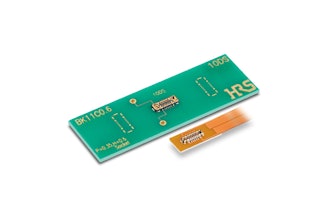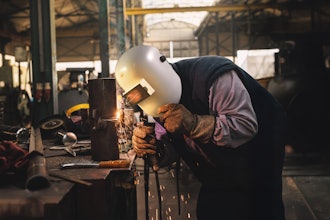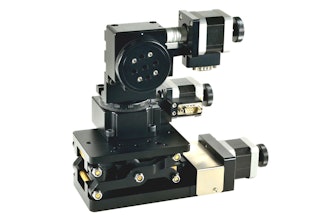
By Jeff Palumbo, General Magnaplate Corp.
Companies that manufacture everything from bakery items and frozen food to meat and poultry products are continuing to specify new equipment and upgrade older machinery to meet market needs. Equipment must be designed for clean-in-place (CIP), high throughput and seamless integration with packaging systems.
Above all, food processing machinery must comply with stringent regulations set forth by government and global agencies such as the U.S. Food and Drug Administration (FDA) and U.S. Department of Agriculture (USDA).
Equipment must also be able to withstand regular cleaning and disinfection by steam and hot water as well as harsh chemicals including hypochlorites and nitric acid.
Another recent development impacting the domestic food processing industry is the Food Safety Modernization Act (FSMA) signed into law in January 2011. FSMA entails the broadest reform of food safety laws passed in more than 70 years, and was established to ensure a safe food supply by focusing on preventing contamination rather than responding to crises.
Due to the stringent requirements set forth by FSMA, manufacturers are now specifying new equipment and repairing worn machinery with CIP and ease of washdown as top priorities.
With regard to overall industry trends, global sales of food processing machinery are forecast to rise 7.3% per year to $53.3 billion in 2016, according to market research firm The Freedonia Group Inc., Cleveland. Much of this increase is expected to come from demand for processed foods in developing nations as personal incomes rise. Among equipment categories, industrial bakery and pasta machinery will see the largest gains due to the basic nature of the food products made by these units.
Meeting the diverse needs of food and beverage manufacturers requires equipment in excellent operating condition that will handle the demands of 24/7 plant schedules and rigorous cleaning routines. Among the many factors that plant engineers, equipment purchasers and those in the MRO (maintenance, repair and operations) community must consider are machine surfaces that interface directly with food products.
Engineered coatings that enhance and protect metal parts such as cutting blades and cookie molds are essential tools for solving hygiene and performance problems in the food processing industry.
Food Contact Surfaces Must Meet Stringent Criteria
Coatings that come into direct contact with food must meet strict criteria for use. First and foremost, coating formulas need to comply with FDA and USDA codes as well as global regulations.
Surface hardness levels should extend equipment service life by protecting against corrosion, wear, friction and galling, and when equipment is idle, coating surfaces must remain non-oxidizing even in harsh environments. Another key factor is that sanitation routines must be easy to follow, thorough and as environmentally friendly as possible.
To help enable ease of cleaning, surfaces must be dense and non-porous to inhibit bacterial growth. In addition, coated parts should feature non-stick surfaces to prevent product hang-up and ensure fast and efficient mold release. Above all, coatings must not contaminate the foods they have direct contact with, and cutting surfaces such as blades and slicers must remain sharp despite constant use.
Food-friendly Coatings Solve Processing and Packaging Dilemmas
Keeping food processing equipment in optimal operating condition is a top priority for engineers and plant managers.
Production personnel must continually fight against issues such as sticking, premature wear, abrasion and corrosion. To reduce these challenges, engineered coatings are widely used to protect machine components and solve performance problems in food processing facilities. These specialized coatings permanently enhance the surfaces of various metal parts used in food processing equipment to solve wear, corrosion, lubrication and release problems.
Coatings are applied to substrates in a multi-step system that begins with specialized cleaning processes. Next, applying a base coating using conversion, deposition, thermal spray or a mix of these techniques enhances the substrate’s surface. The process then continues with a controlled infusion of various engineered polymers or other dry-lubricating materials or metals.
The chief advantage of Magnaplate coatings versus other options, such as paint-on varieties, is that Magnaplate coatings become an integral part of the substrate. Materials are mechanically bonded and the resulting new surface layer cannot chip, flake, peel or rub off. Because these coatings create metal surfaces with superior performance to both the original base metal and the coatings themselves, these surface enhancements are said to be synergistic.
To see how engineered coatings can maximize throughput and minimize downtime by solving specific issues, let’s take a look at a few examples from the food processing industry. The case studies below illustrate how the right surface enhancement coating can increase productivity and protect equipment from wear and contamination:
Pitting and corrosion — An ice cream factory needed to protect its turntable holding plates that transport ice cream containers during packaging.
Situation: Caustic cleaning solutions were causing aluminum machine parts to pit and corrode. In addition, sanitary cleanup was a lengthy process due to used solutions that needed to be carefully disposed of.
Solution: Tufram® was applied to the holding plates to prevent corrosion and enable easy cleanup by creamery technicians.
Sticky coatings — A cereal manufacturer desired fast and efficient product flow to increase throughput of cereal boxes.
Situation: A fruit and sugar coating on cereal was sticking to a chute, causing grains to backup onto conveyors during transfer to packaging lines and requiring a lengthy sanitation process.
Solution: Nedox was applied to the chute, facilitating quicker product flow and minimizing cleanup time.
Batter hang-up — A cookie manufacturer needed to boost production and minimize excessive downtime.
Situation: Cookie batter was sticking to the impressions of brass cookie molds and abrasion was diminishing the cookie patterns over time.
Solution: Nedox was applied to the brass rolls to impart wear resistance and give the rolling surfaces anti-stick, anti-corrosion properties to prevent batter hang-up.
Messy slitter blades — Hot caramel was sticking to slitter blades during candy bar production.
Situation: Caramel kept building up on cutting blades, causing fresh caramel strips to jump out of alignment.
Solution: Lectrofluor® was applied to the blades, eliminating manual scraping of blades and constant monitoring of machinery by plant personnel.
Residue on press plates — Wet and sticky tortilla dough was searing onto press plates, making finished tortillas difficult to remove without tearing.
Situation: Several oils and sprays were tried without success.
Solution: Tufram was applied to the press plates, providing the contact surfaces with the necessary release properties.
Abrasion of forming molds — Highly abrasive dog bones are formed in molds that typically use an abrasion-resistant coating to protect mold surfaces.
Situation: Traditional coatings typically wear off in as little as two weeks, requiring constant monitoring and reapplication.
Solution: Applied to the same molds, Plasmadize® significantly extends wear life and creates a nonporous surface that boosts molding cycle speeds and throughput.
Food-Friendly Coating Families
Tufram — Gives aluminum parts a harder-than-steel, permanently dry-lubricated surface that resists corrosion, abrasion and galling. The smooth, slippery surface provides superior mold release, eliminating sticking and product hang-up.
Nedox — Protects most base metals, including aluminum and titanium, against abrasion, corrosion and static buildup. Outperforms and outwears chrome and stainless steel, and offers excellent mold release and easy cleanup without the use of caustic chemicals or bleaches.
Plasmadize — Provides corrosion and wear resistance for all metals; unsurpassed by conventional thermal sprays. More ductile than chrome plate, Plasmadize may be applied to protect or restore most types of parts. Excellent for sliding applications, such as product chutes and carousels.
Lectrofluor — This polymer-based coating prevents corrosion and chemical attack of metals used in harsh environments. Features proprietary blends of engineered polymers and a low coefficient of friction.
Goldenedge® — When applied to blades, knives and other cutting tools, its thickness is controlled to within micro-inches to prevent dulling. Creates a dense, ultra-hard surface that keeps edges as sharp as when they were first honed, extending blade life by up to 20 times.
MAGnanoSHIELD® — Offers antimicrobial protection for metal parts while simultaneously delivering a low COF, hydrophobicity, wear and corrosion resistance, and release properties. MAGnanoSHIELD may be added to many of General Magnaplate’s FDA-compliant protective coatings.
To learn how surface enhancement coatings can eliminate problems in your next food processing application, contact technical representatives at General Magnaplate Corporation, call (800) 852-3301, e-mail [email protected], or visit www.magnaplate.com.





















